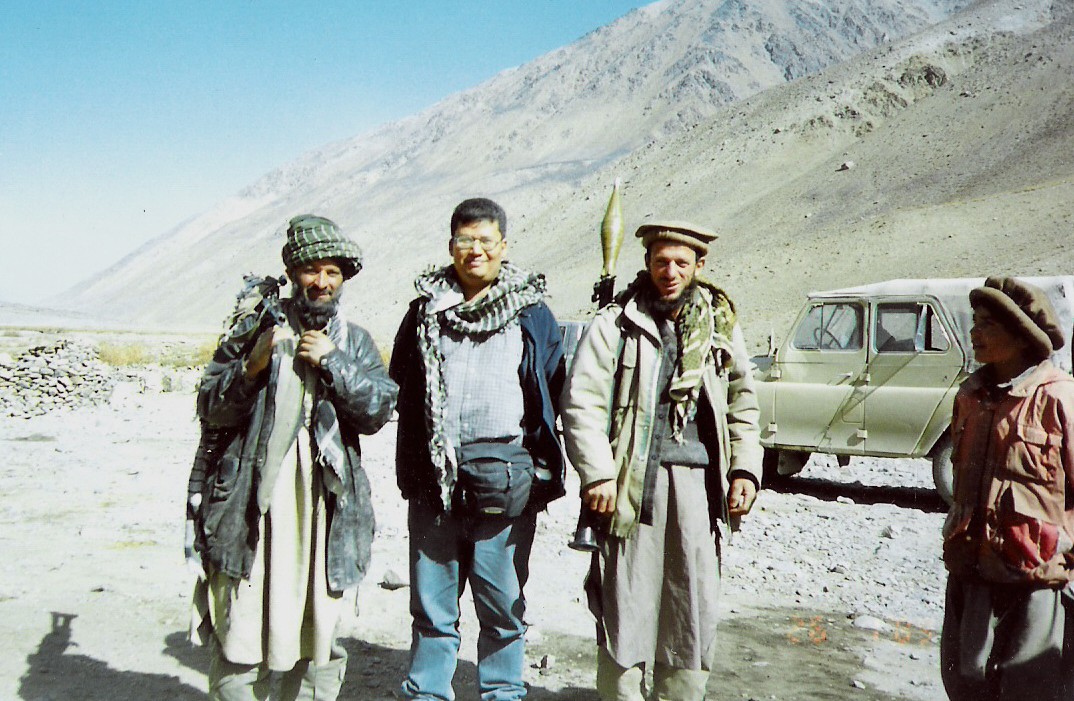BenarNews
Yala, Thailand
For weeks, Thai security and intelligence agencies debated how the death of Sapae-ing Baso would affect the separatist movement he was accused of leading in Thailand’s Muslim-majority Deep South.
One answer: very little. Violence in the restive region has resumed now that the rainy season has ended.
“BRN is a revolutionary organization that is run by a group of elders, not by one individual. Of course, there is a sense of loss because of what Sapae-ing meant to his people,” said an operative from the Barisan Revolusi Nasional (BRN), a long-standing Patani Malay separatist group.

Sapae-ing, a former head master of Thammawittaya Foundation School in Yala province, died at age 86 of complications from diabetes in Malaysia on Jan. 10.
BRN cadres say Sapae-ing’s passing will have no impact on their campaign of violence, which, for the time being, aims to make the region as ungovernable as possible.
A hero of the Patani narrative
Armed insurgency in the region known among locals as Patani flared up in the early 1960s – 50 years after then-Siam and British Malaya drew their common border – in response to a government assimilation policy, which, local Malay Muslims thought, came at the expense of their cultural-religious identity.
That wave of violence subsided in the early 1990s as backers in the Middle East and North Africa repositioned themselves for a post-Cold War world.
But a narrative painting the Thai state as invaders in the historical homeland of the Malays never went away. That narrative also made heroes out of men like Sapae-ing, a high school educator who promoted local Malay identity to resist a state-constructed identity and narrative.
Separatist violence returned in late 2001 but was not officially recognized until Jan. 4, 2004, when scores of combatants raided an army battalion and made off with more than 400 rifles. The then-government of Prime Minister Thaksin Shinawatra could no longer deny the return of Malay separatist movement in the historically contested region.
Thailand’s counter-insurgency approach has never moved beyond carrot-and-stick proposals, including a blanket amnesty and a small plot of land for former combatants. Government policy has centered on development aimed at winning hearts and minds of the local Malay Muslims, who account for more than 80 percent of the 2 million residents in the area.
Nor has a military approach ended the problem. Soldiers in the Deep South are sitting ducks, as troops can’t distinguish between ordinary citizens and combatants. Today, the insurgents are in towns, cities, villages and municipalities across the region.
As long as the Patani narrative remains intact, separatism as an ideology will never go away, exiled separatist leaders say.
As for Sapae-ing, the fact that a significant number of students from his school took up arms against the Thai state made him an easy target for then-Prime Minister Thaksin Shinawatra.
Thaksin needed to put a face on the conflict, and Sapae-ing became that face. Thaksin stated in one of his weekly radio addresses that the fugitive cleric, who fled southern Thailand in December 2004, was poised to be the leader of a liberated Patani.
The arrest warrant that forced Sapae-ing to flee was signed by then-Police Col. Thawee Sodsong, a man who would later become a key person the government’s peace initiatives for the far South for Thaksin and his sister, Yingluck.
Thai officials who examined the warrants said evidence against Sapae-ing was extremely flimsy and that he would have beaten the charges easily had he decided to fight it in court.
In the two years immediately after Sapae-ing fled southern Thailand, nine teachers from his school were shot dead, one-by-one, all at close range, presumably by members of a government or pro-government death squad.
Intervention from high-ups in Bangkok put an end to the killing of Sapae-ing’s teachers, according to a senior government source. But what successive administrations failed to grasp was the resilience of the cultural-historical narrative that Sapae-ing represented.
Successive governments tried to lure him to the table with the promise of leniency. It didn’t work. He was not about to sell his soul to the Thais, one associate said.
And since Thailand was not even willing to talk about the historical grievances and root cause of the conflict that claimed nearly 7,000 lives since January 2004, Sapae-ing didn’t see any point in talking to Thai officials.
Yoda-like
Artef Sohko, a youth leader from the far South, described Sapae-ing, his late principal, as a strict, polite and simple man who led by example.
The principal would go around pick up trash around the school like an ordinary janitor. After school, he would go around town to check to see if any of his students were getting into trouble.
Young people saw in him a role-model of the man they wanted to grow up to be. Parents admired his moral authority with students. Clerics in the region admired his leadership.
Foreign observers who closely monitor the conflict jokingly compared Sapae-ing to Yoda, the wise and powerful Jedi master from Star Wars. Some separatist combatants speculated that Sapae-ing was blessed with the power to go invisible and thus evade arrest.
After more than a decade of living secretly in exile and up until his death, the mystique around Sapae-ing never seemed to fade.
Upon learning of his death, Thai Prime Minister Prayuth Chan-o-cha expressed his sorrow to Sapae-ing’s family, while Thawee, the man who sent him and many other suspects on the run, also dropped by his family home to pay respects.
Today, weeks after his death, observers are asking who, if anyone, can replace him. One thing is clear: the end to the current wave of insurgency is nowhere in sight.
Don Pathan is a consultant and security analyst based in Thailand. The opinions expressed in this commentary are those of the author and not of BenarNews.

No comments:
Post a Comment